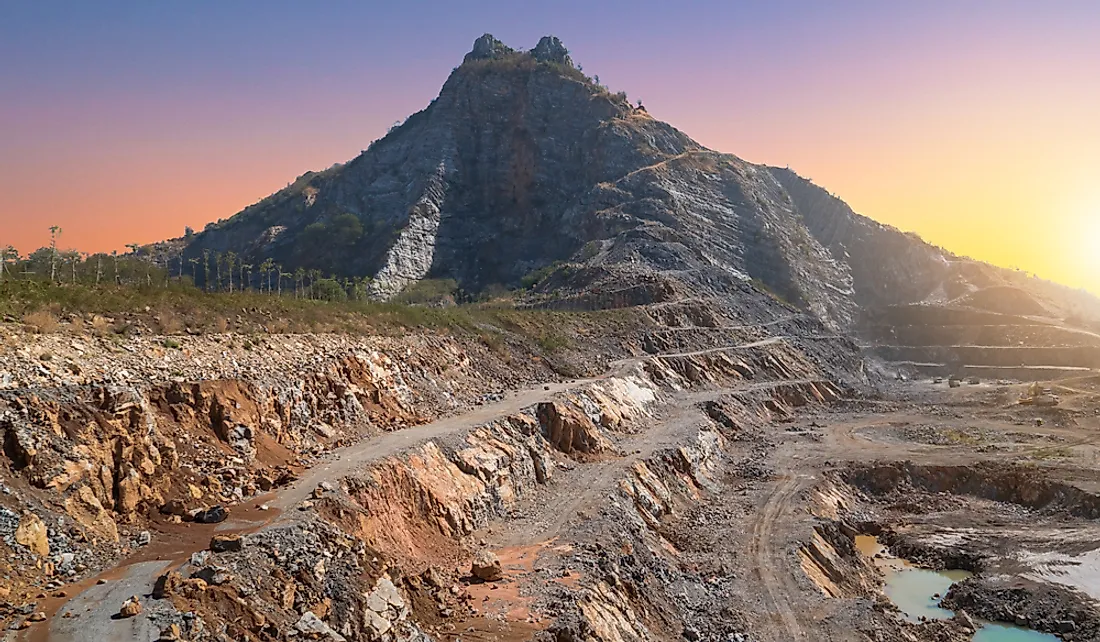What Are Biotic And Abiotic Natural Resources?

Natural resources refer to the naturally occurring things provided by the earth for the purpose of survival of humans and other living organisms. Human beings play no part in the formation or existence of these resources. They can only modify the resources for their use. Examples of natural resources are land, water, animals, forest, sunlight, coal, petroleum, mineral resources, and air. Natural resources can be divided into biotic and abiotic natural resources. Biotic natural resources are those that come from organic substances while the abiotic natural resources come from inorganic substances. Both biotic and abiotic natural resources support survival and reproduction of humans and other living organisms that exist on earth.
Biotic Natural Resources
Biotic natural resources come from organic matter or living things, also known as the biosphere or ecosphere. These resources directly or indirectly affect the survival of humans and other living organisms as well as their reproduction. They also affect the interactions of organisms including predation, disease, parasitism, and waste management.
Examples of biotic natural resources are animals, plants, and fossil fuels (such as oil, coal, and natural gas). Fossil fuels form part of the biotic natural resources because they are formed through the decay of living organisms that existed millions of years ago.
Abiotic Natural Resources
Abiotic natural resources come from non-living things or inorganic matter including the lithosphere, atmosphere, and hydrosphere. Abiotic limiting factors restrict the growth of populations to specific environments and numbers. Some of the abiotic natural resources are air, water, sunlight, and minerals (like iron, gold, silver, copper, titanium, and diamonds).
Threats To Natural Resources
The World’s High Population Growth Rate
The high population growth rate has led to overpopulation. As a result, some countries such as China are restricting the number of children that a married couple should have. According to the United Nations, the current population of the world is 7.7 billion. Overpopulation has led to increased pressure on the available natural resources which are also limited. Consequently, the exhaustible natural resources such as forests, arable land, fossil fuels, and fresh water are getting depleted at a faster rate than they were before. According to the UNEP Global Environmental Outlook, if this trend goes on, then there’s a likelihood that the natural resources will get depleted. Thus, posing a threat to the survival of future generations of humans. Overpopulation has also increased the demand for food, clothes, timber, natural gas, and fish to an extent that the natural resources cannot support. Hence, the ever increasing human population is a threat to the natural resources that primarily exist to support its survival. It has also negatively impacted the quality of life.
Intensive Agricultural and Farming Practices
Large scale and subsistence farming have led to the conversion of grasslands and forest land into farmlands. The land is now being used for crop farming and animal rearing (including livestock rearing, poultry farming, and fish farming in ponds). The purpose of increased farming is to produce food for the increased human population. The intensive agricultural and farming practices have led to the depletion of fertile land, wildlife, and forest cover.
Global Warming and Climate Change
Human activities and overpopulation have led to global warming and climate change caused by greenhouse gases and carbon footprints released in the atmosphere. Global warming has led to extreme temperatures and the poisoning of the air. Thus, altering the favorable human survival conditions.
Pollution of the Environment
Biotic and abiotic components can barely survive in polluted environments. The release of toxic substances from industries, homes, and agricultural products such as fertilizers and pesticides into land, water, and air have resulted in the pollution of these natural resources.
The Shifting Lifestyle Demands of the 21st Century
In the past, humans lived simple lives required basic needs such as food, water, and shelter. However, in the 21 st century, lifestyles have shifted as people demand more comfortable lives with regards to good housing, clothing, efficient transport, education, and entertainment among other demands. As a result, there is a need for more production to supply these needs. Increased production translated into industry process which requires water, energy, and raw materials. It also leads to increases release of toxic substances into air, water and land and the circle goes on and on. Humans need to adopt a sustainable lifestyle to preserve the biotic and abiotic natural resources.











